7 Reasons Why Abortion Is a Race Equity and Health Justice Issue
Emily Stewart is the Executive Director of Community Catalyst, where she works to advance a movement for health equity and justice, and former VP of Policy at Planned Parenthood Federation of America.
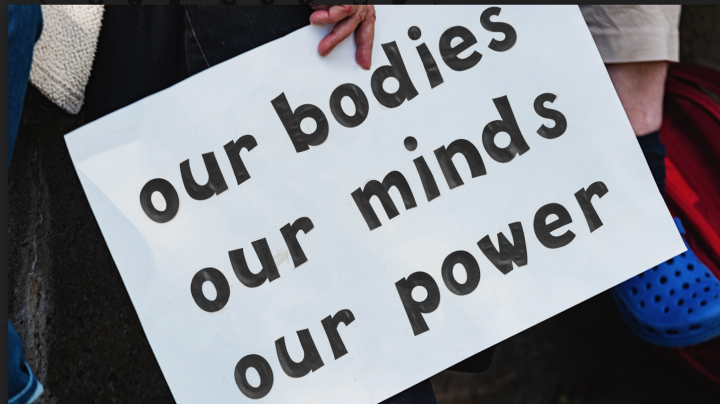
Abortion access is fundamental to the world Community Catalyst and our partners are trying to build–a just society where everyone has what they need to be healthy, where everybody is cherished, where everyone’s happiness matters.
Here’s what to know about #abortion as a race equity & health justice issue:
1. The constitutional, legal right to abortion has never equated to access, especially for Black and brown people, people with low-incomes, and people in rural areas.
“The post-Roe reality that folks are afraid of is currently the lived reality of many people here in the South,” shared Oriaku Nijoku, cofounder and executive director of Access Reproductive Care-Southeast, a reproductive-justice-structured abortion fund based in Atlanta.
That’s why some advocates have shifted more focus to reproductive justice and are calling on policymakers to reimagine abortion access, rather than “reinstate the doomed precedent” should Roe v. Wade be overturned by the Supreme Court.
“When we only think about having the right to something, but not having access, then do we really have that right?,” asks Monica Simpson, executive director of the Sister Song. “And so we must think beyond Roe, about how we want to create the reproductive justice necessary for folks to be able to live their lives — most who are already living in a post-Roe world.”
2. Although the majority of people support the right to abortion, historically excluded communities already face unprecedented restrictions on their body, decisions, family, and life.
It’s no accident that the states with the most restrictive abortion bans are also responsible for standing between 2.2 million uninsured adults and a pathway to attaining affordable health insurance.
The Affordable Care Act has helped reduce disparities in health insurance coverage among states that expanded, but the coverage gap worsens these disparities by disproportionately denying coverage to people of color, according to a report from the Center on Budget and Policy Priorities. While people of color comprised 41 percent of the adult, non-elderly population in non-expansion states, they made up 60 percent of people in the coverage gap, including 28 percent who are Latino and 28 percent who are Black.
In Texas, people of color made up 74 percent of those in the coverage gap, with Latino adults alone comprising 55 percent. In Mississippi, most of the coverage gap population was Black, and in both Georgia and South Carolina it was more than 40 percent Black. Over 70 percent of Asian adults and 88 percent of Latino adults in the coverage gap lived in Texas and Florida.
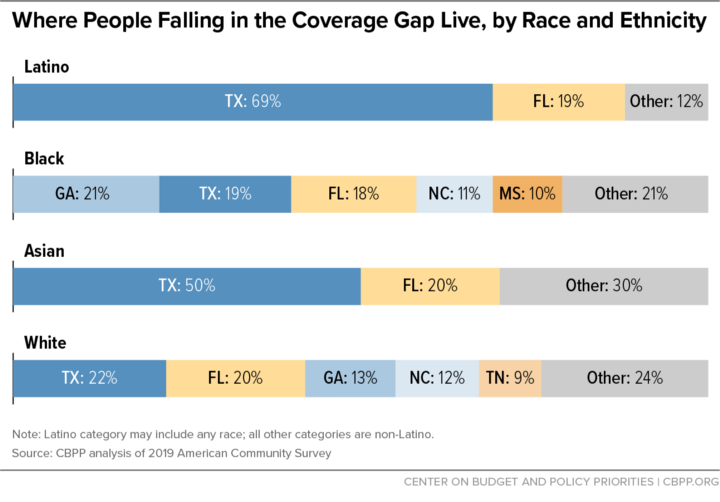
3. Racist, sexist, homophobic, and transphobic policies rooted in power and control can impact all facets of a person’s life: freedom, safety, financial stability, childcare, paid family leave, and more.
According to CDC data compiled by KFF, white patients account for 33 percent of abortions while Black, Hispanic, and patients of other races accounted for over 60 percent in 2019. And according to research from PerryUndem, people very much see (and experience) abortion bans as part of a larger effort to take power and control over one’s body.
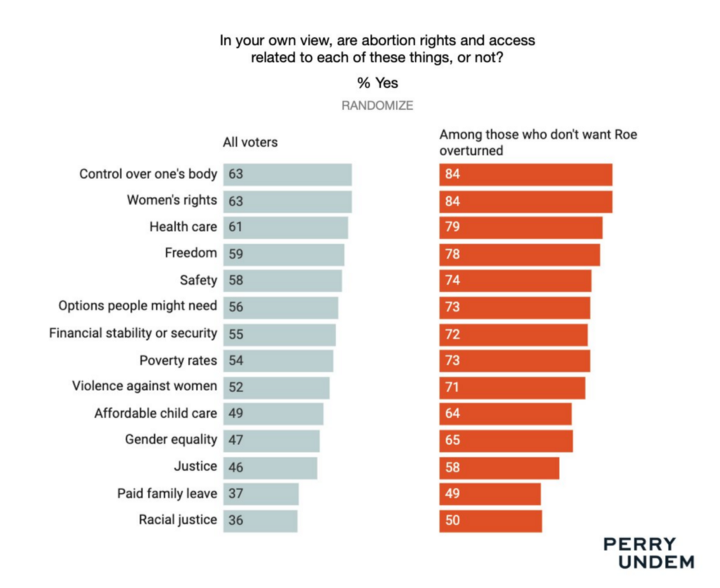
4. Forcing a person to carry an unwanted pregnancy has serious consequences on health and economic wellbeing, including greater odds of living below the Federal Poverty Level (FPL).
Reasons for having an abortion are multi-faceted and include a range of issues, including the financial burden placed on individuals and families. Policies that restrict a person’s ability to make their own decisions, based on their own unique circumstances, is yet another example of how our society fails women and birthing people — from pre-and-postnatal care, to childcare to paid family leave, to fair wages, and beyond.
Data show that low-income women have accounted for an increasing share of abortions in recent decades. Research also shows that being denied an abortion lowered a woman’s credit score, increased a woman’s amount of debt and increased the number of their negative public financial records, such as bankruptcies and evictions, according to a Turnaway study by the collaborative research group Advancing New Standards in Reproductive Health (ANSIRH) at the UCSF.
Americans are already drowning in medical debt, with the burden disproportionately borne by people of color: 27 percent of Black households and 19 percent of Hispanic households have medical debt, compared to 16 percent of white households.
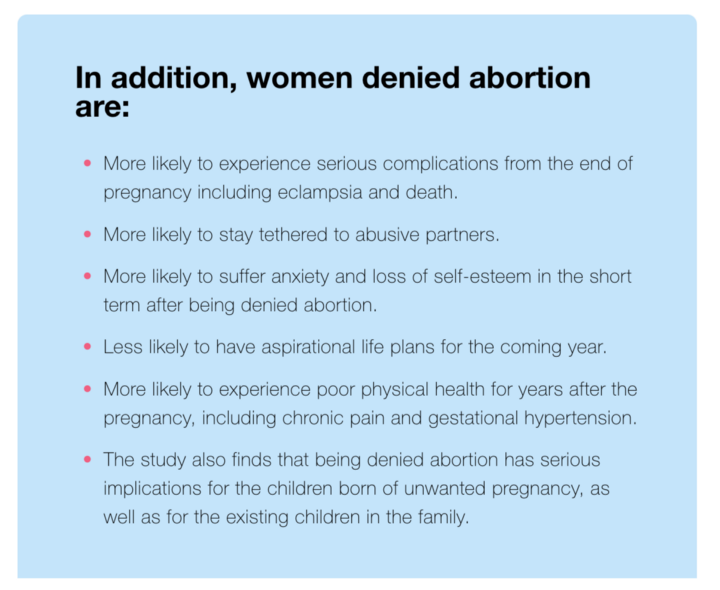
5. Maternal health outcomes for Black women and birthing people are already worsening at an alarming rate due to racism and other forms of discrimination. Abortion bans only make this worse.
The reality is that states with more restrictive abortion policies also tend to have fewer supportive policies in place for parenting people and their families.
As a result, Black women and birthing people face three times the maternal mortality rate of their white peers, according to maternal mortality statistics for 2020 from the Centers for Disease Control and Prevention (CDC). Beyond that, Hispanic women have seen the largest maternal mortality increase of any racial or ethnic demographic group, rising by a staggering 44 percent in just one year.
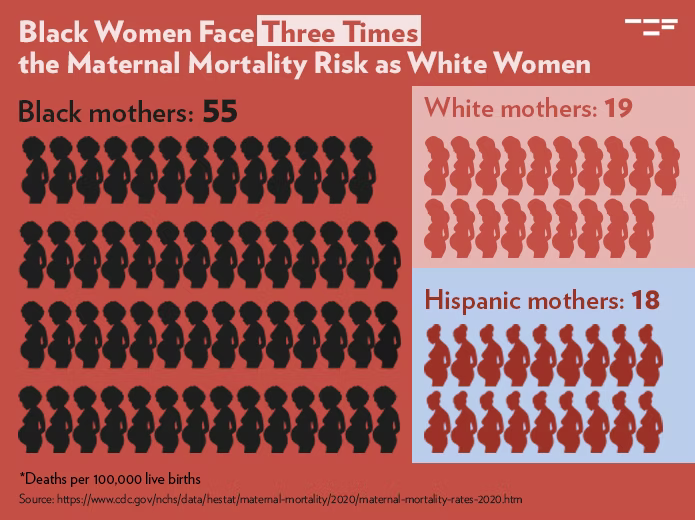
6. While the legal right to abortion doesn’t always equate to access, it remains an essential starting point. The Supreme Court’s ruling is a devastating blow to so many people who are simply trying to get the care they need to live the lives they want.
According to data from the Guttmacher Institute, 26 states are certain or likely to ban abortion as soon as possible.
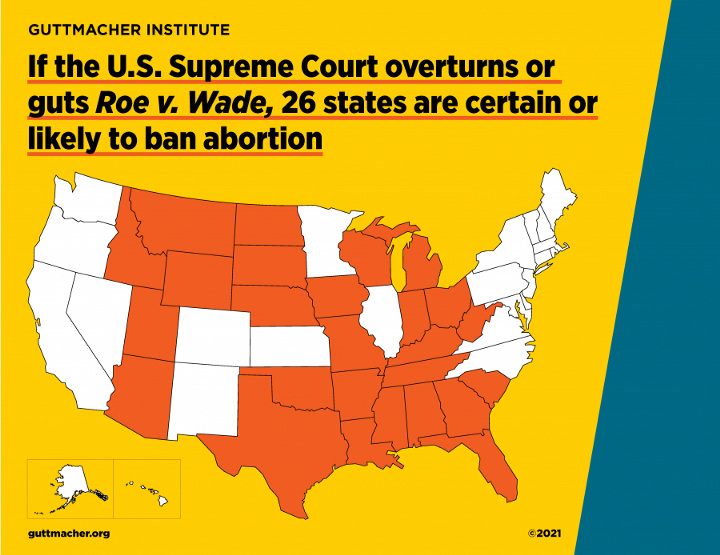
7. Historically excluded communities already face unprecedented restrictions on their body, decisions, family, and life.
And they’re the first to see so clearly that abortion bans are part of a larger, coordinated threat on democracy led by the rise of extreme authoritarian policymakers at the state and national level.
For example, a recent study by the Institute for Research and Education on Human Rights, found that more than 1 in 5 Republican state legislators in the United States were affiliated with far-right groups. “The ideas of the far right have moved pretty substantially into the mainstream,” Devin Burghart, IREHR’s executive director, told the Washington Post, “not only as the basis for acts of violence but as the basis for public policy.”
Collectively, we must ask ourselves: what type of society do we stand for? Do we stand for freedom and trust for everyone or control and power in the hands of the few? Will we fight for all people to have the freedom and trust — no matter who they are or where they live — to have agency over our bodies and our lives? Or will we continue to allow an extremist ideology to have power and control over every aspect — from the bedroom, to the school room, to the doctor’s office.
There’s a long road ahead, and it’s scary. Together, we must remain united in our collective vision to build a society centered on race equity and health justice. A society where everyone has what they need to be healthy, where everybody is cherished, where everyone’s happiness matters.
I believe in the collective us–in our vision, strength, and perseverance.
Learn more about Community Catalyst’s vision for the future.
#
Statement of Community Catalyst Executive Director Emily Stewart in response to the Supreme Court’s majority decision on Dobbs v. Jackson Women’s Health Organization can be found here.